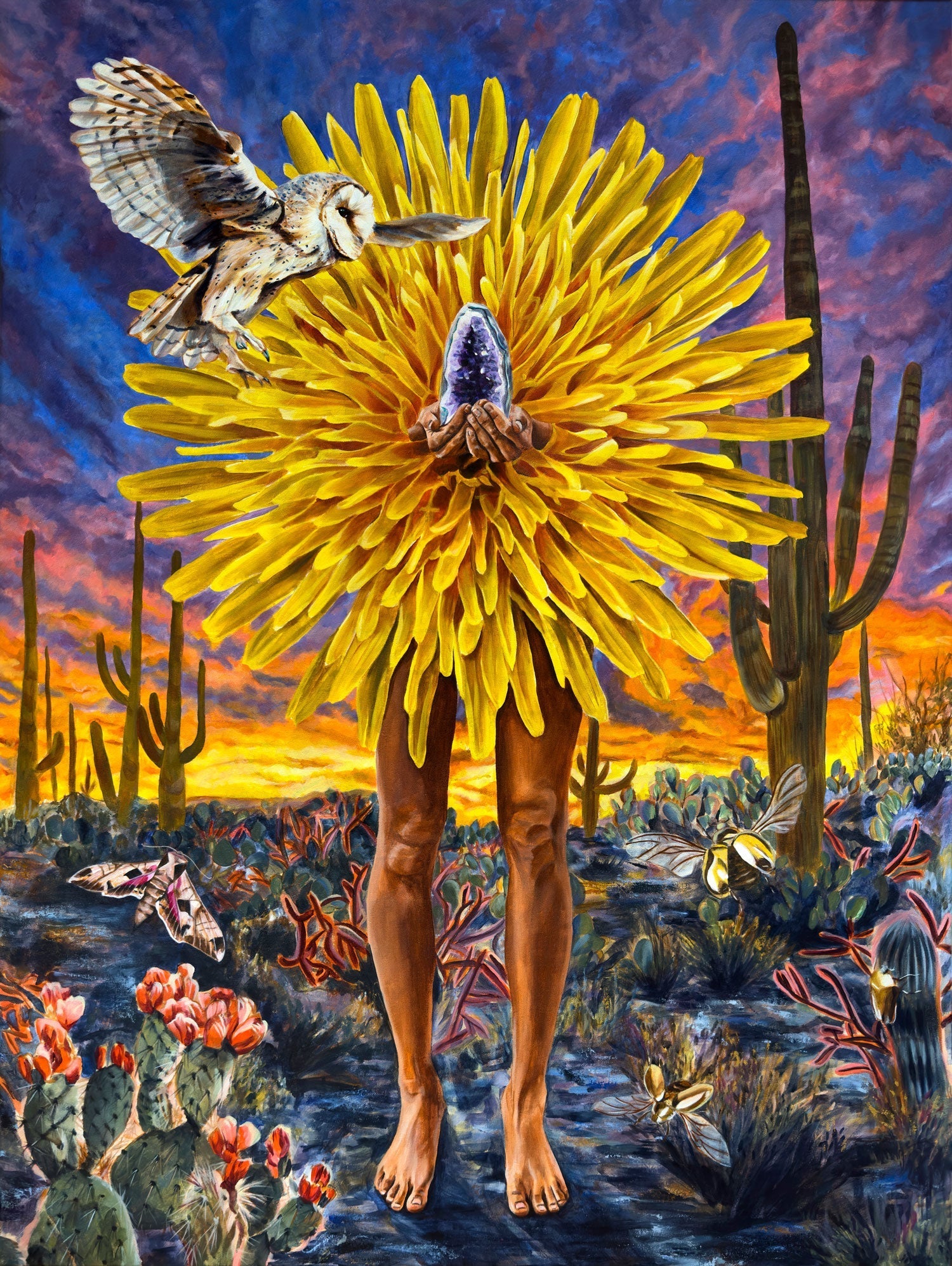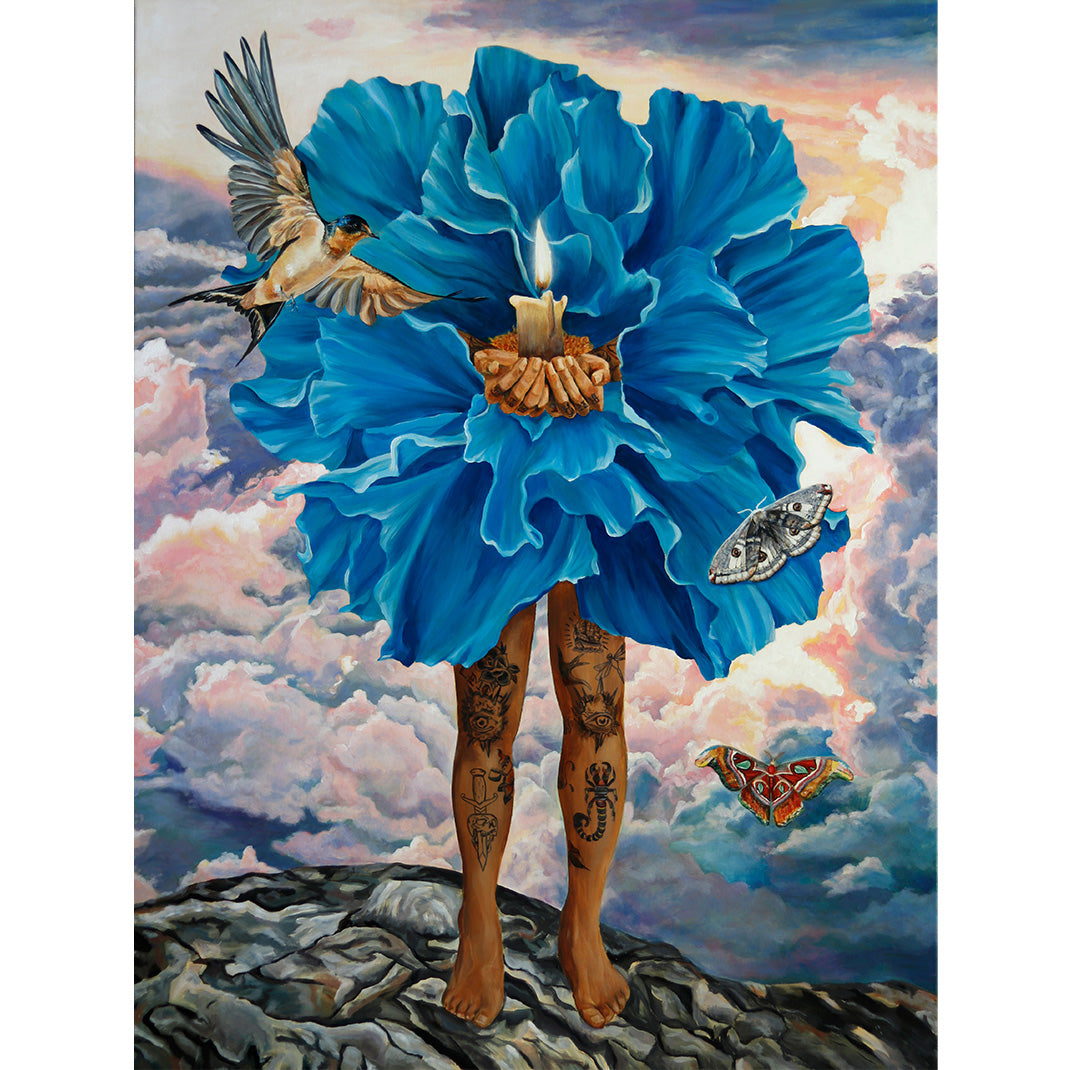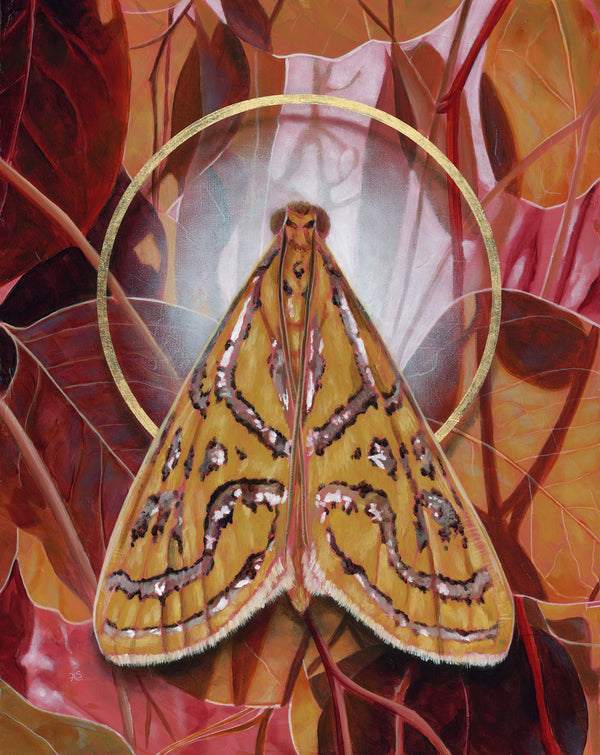
"The Basis of Life" is a visual meditation on the root chakra, survival, and stability in light of so many who have lost their lives recently to both systemic violence and COVID-19. It is part of a seven-piece series that explores aspects of human existence through the chakras and other mythological symbols.
In La dame aux camellias written by Alexandre Dumas, the character Marguerite wears a red camellia while menstruating, and this primal association with blood—the basis of life— is what I hoped to capture with the color red in this painting. Despite the visual complexity of the scene, this piece hints at something very simple and foundational in exploring our need for nourishment, our perceptions of safety, and our instinct for survival. We are first nourished through our mother’s blood in the womb and then enter a world where our first ecosystem and community informs our sense of security and view of the world. A forest can be both a safe refuge and a dark, dangerous demonstration of Rudyard Kipling’s law of the jungle, and I wanted to explore this dichotomy through unassuming characters symbolic of protection, self-reliance, and luck.

"The Basis of Life" original painting, 36 x 48 inches acrylic on canvas, 2020
The defense mechanism of the lucky ladybug is to emit an offensive odor; they also protect crops by eating agricultural pests. The ‘chickadee’ call of the bird that bears its name is an alarm, with the number of ‘dees’ signaling the type of predator present. The luna moth uses distraction and camouflage to elude predators, and a rare sighting of these ephemeral night creatures heralds good fortune. So much of human safety is based on the luck of the draw and the circumstances one is born into— a fact demonstrated by centuries of racially-motivated violence in America, among many other disparities across the globe. This painting was completed with a sense of grief and horror the week that George Floyd was murdered as I examined the relative privilege I was born into as a white, American woman and attempted to understand my own essence and purpose as a creative human consciousness beneath, beyond, and because of these assigned identities.
Root Chakra Meaning
The winding path of shadows behind the figure is reminiscent of the Kundalini serpent of Hindu mythology, said to reside coiled at the base of the spine in the muladhara chakra, which roughly translates to the root or basis of support, from which I derived the title for the painting. This energy center is associated with the color red, earth element, survival, safety, community, stability, and vitality. Another symbol of life and latent potential, the acorn is offered in the middle of the camellia as an invitation to discover what lies dormant in the dark woods of your being and what potential lies beyond the awakening of this fundamental life force.
The camellia, here personified with actionable legs and hands, was prized by the samurai of Japan as a symbol of grace, love, and the fleeting nature of life. It offers a final contemplation of transcending fear, not only of death, but of life as well.
What will I do with my body while I live? What will you do with yours?
The Basis of Life
by Aimee Schreiber
The basis of life
lies in flowing red blood
earth that gleams like a knife,
breath extending from mud
Soft shadow and light
and open, cupped hands
dreaming trees of great height,
seeking to understand
Rare creatures in flight
round an elegant coil
rising through day and night
out of dark, deep, damp soil

Purchase a print of ‘The Basis of Life’ at The Copper Wolf Art Gallery



